DeWalt D51276K Handleiding
DeWalt
Nietmachine
D51276K
Bekijk gratis de handleiding van DeWalt D51276K (7 pagina’s), behorend tot de categorie Nietmachine. Deze gids werd als nuttig beoordeeld door 95 mensen en kreeg gemiddeld 4.0 sterren uit 48 reviews. Heb je een vraag over DeWalt D51276K of wil je andere gebruikers van dit product iets vragen? Stel een vraag
Pagina 1/7

INSTRUCTION MANUAL
GUIDE D’UTILISATION
MANUAL DE INSTRUCCIONES
D51276 15 Gauge (1"– 2-1/2") Angled Finish Nailer
D51257 16 Gauge (1"– 2-1/2") Straight Finish Nailer
D51276 Cloueuse de finition à angle [25,4 à 38,1 mm (1 à 2-1/2 po)], calibre 15
D51257 Cloueuse de finition (clous droits) [25,4 à 38,1 mm (1 à 2-1/2 po)], calibre 16
D51276 Clavadora angular calibre 15 [25 a 64 mm (1po. a 2-1/2 po.)]
D51257 Clavadora recta calibre 16 [25 a 64 mm (1 po. a 2-1/2 po.)]
INSTRUCTIVO DE OPERACIÓN, CENTROS DE SERVICIO
Y PÓLIZA DE GARANTÍA. ADVERTENCIA: LÉASE ESTE
INSTRUCTIVO ANTES DE USAR EL PRODUCTO.
D WALT Industrial Tool Co., 701 East Joppa Road, EBaltimore, MD 21286 (MAR09)
Part No. N027635 D51276, D51257 Copyright © 2007, 2008, 2009 DEWALT
The following are trademarks for one or more D WALT power tools: the yellow and black color scheme; E
the “D” shaped air intake grill; the array of pyramids on the handgrip; the kit box configuration; and the
array of lozenge-shaped humps on the surface of the tool.
PUSHER
POUSSOIR
LIBERADOR DEL
RESORTE IMPULSOR
REVERSIBLE
BELT HOOK
CROCHET DE CEINTURE
RÉVERSIBLE
SUJETADOR AJUSTABLE
PARA EL CINTURÓN
JAM CLEARING
LATCH
LOQUET DE
DÉGAGEMENT
PASADOR PARA
DESOBSTRUCCIÓN
DUAL LOAD MAGAZINE
CHARGEUR DOUBLE
FUENTE DOBLE
TRIGGER
DÉTENTE
GATILLO
CONTACT TRIP
DÉCLENCHEUR PAR
CONTACT
ACTIVADOR POR
CONTACTO
DEPTH
ADJUSTMENT WHEEL
MOLETTE DE RÉGLAGE
DE PROFONDEUR
RUEDA DE AJUSTE DE LA
PROFUNDIDAD
360˚ EXHAUST
DÉFLECTEUR D’ÉCHAPPEMENT DE 360˚
CÁMARA DE ESCAPE DE 360˚
EXTERNAL TOOL PARTS / PIÈCES EXTERNES DE L’OUTIL /
PARTES EXTERNAS DE LA HERRAMIENTA
NO-MAR PAD
COUSSINET ANTIRAYURES
PROTECTOR ANTI-RAYADURA
D51257 16G. Finish Nailer
D51257 Cloueuse de finition (clous droits) calibre 16
D51257 Clavadora para acabados calibre 16
TRIGGER
LOCK-OFF
BOUTON DE
VERROUILLAGE DE
LA DÉTENTE
SEGURO DEL
GATILLO
D51276 15G. Angled Finish Nailer
D51276 Cloueuse de finition à angle calibre 15
D51276 Clavadora angular calibre 15
TRIGGER LOCK-OFF
BOUTON DE
VERROUILLAGE DE
LA DÉTENTE
SEGURO DEL
GATILLO
360˚ EXHAUST
DÉFLECTEUR D’ÉCHAPPEMENT DE 360˚
CÁMARA DE ESCAPE DE 360˚
REVERSIBLE BELT HOOK
CROCHET DE CEINTURE
RÉVERSIBLE
SUJETADOR AJUSTABLE
PARA EL CINTURÓN
TRIGGER
DÉTENTE
GATILLO
DEPTH ADJUSTMENT
WHEEL
MOLETTE DE RÉGLAGE
DE PROFONDEUR
RUEDA DE AJUSTE DE
LA PROFUNDIDAD
PUSHER
POUSSOIR
LIBERADOR DEL
RESORTE IMPULSOR
DUAL LOAD MAGAZINE
CHARGEUR DOUBLE
FUENTE DOBLE
NO-MAR PAD
COUSSINET ANTIRAYURES
PROTECTOR ANTI-RAYADURA
CONTACT TRIP
DÉCLENCHEUR PAR
CONTACT
ACTIVADOR POR
CONTACTO
JAM CLEARING
LATCH
LOQUET DE
DÉGAGEMENT
PASADOR PARA
DESOBSTRUCCIÓN
IF YOU HAVE ANY QUESTIONS OR COMMENTS ABOUT THIS OR ANY D WALT TOOL, CALL US TOLL FREE AT: E1-800-4-DEWALT (1-800-433-9258)
POUR TOUTE QUESTION OU TOUT COMMENTAIRE CONCERNANT CET OUTIL OU À PROPOS DE TOUT AUTRE OUTIL DEWALT, COMPOSER SANS FRAIS LE : 1-800-4-DEWALT
(1-800-433-9258).
SI TIENE ALGUNA DUDA O ALGÚN COMENTARIO SOBRE ÉSTA U OTRA HERRAMIENTA DEWALT, LLÁMENOS AL NÚMERO GRATUITO: 1-800-4-DEWALT (1-800-433-9258)
SAVE THESE INSTRUCTIONS
Important Safety Instructions for Pneumatic Tools
WARNING: When using any pneumatic tool, all safety precautions, as outlined below, should be followed to avoid the risk of or . Read and death serious injury
understand all instructions before operating the tool.
CONSERVEZ CES DIRECTIVES
Consignes de sécurité importantes pour les outils pneumatiques
AVERTISSEMENT : lorsqu’on utilise un outil pneumatique quelconque, respecter toutes les mesures de sécurité, décrites ci-après, pour éviter un risque de oudécès
de blessures graves. Lire et assimiler toutes les directives avant d’utiliser l’outil.
CONSERVE ESTAS INSTRUCCIONES
Instrucciones importantes de seguridad para las herramientas neumáticas
ADVERTENCIA: Al utilizar una herramienta neumática, deben seguirse todas las precauciones de seguridad descritas a continuación, a fin de evitar el riesgo de
muerte o . Lea y comprenda todas las instrucciones antes de emplear la herramienta.lesiones graves
• Actuating tool may result in flying debris,
collation material, or dust which could harm
operator’s eyes. Operator and others in work
area MUST wear safety glasses with side shields.
These safety glasses must conform to ANSI
Z87.1 requirements (approved glasses have “Z87”
printed or stamped on them). It is the employer’s
responsibility to enforce the use of eye protection
equipment by the tool operator and other people
in the work area. (Fig. A)
• Minimize flying dust and debris by rotating 360˚
exhaust to appropriate setting.
• Always wear appropriate personal hearing
and other protection during use. Under some
conditions and duration of use, noise from this
product may contribute to hearing loss. (Fig. A)
• Use only clean, dry, regulated air. Conden sation
from an air compressor can rust and damage the
internal workings of the tool. (Fig. B)
• Regulate air pressure. Use air pressure
compatible with ratings on the nameplate of
the tool. [Not to exceed 120 psi (8.3 bar] Do not
connect the tool to a compressor rated at over
175 psi (8,3 bars). The tool operating pressure
must never exceed 175 psi (8,3 bars) even in the
event of regulator failure. (Fig. C)
• Only use air hose that is rated for a maximum
working pressure of at least 150 PSI
(10.3 BAR) or 150% of the maximum system
pressure, which ever is greater. (Fig. D)
• Do not use bottled gases to power this tool.
Bottled compressed gases such as oxygen,
carbon dioxide, nitrogen, hydrogen, propane,
acetylene or air are not for use with pneumatic
tools. Never use combustible gases or any other
reactive gas as a power source for this tool.
Danger of explosion and/or serious personal
injury may result. (Fig. E)
• Use couplings that relieve all pressure from
the tool when it is disconnected from the
power supply. Use hose connectors that shut
off air supply from compressor when the tool is
disconnected. (Fig. F)
• Disconnect tool from air supply when not in
use. Always disconnect tool from air supply
and remove fasteners from magazine before
leaving the area or passing the tool to another
operator. Do not carry tool to another work
area in which changing location involves
the use of scaffoldings, stairs, ladders, and
the like, with air supply connected. Do not
make adjustments, remove magazine, perform
maintenance or clear jammed fasteners while
connected to the air supply. If the contact trip
is adjusted when the tool is connected to the air
supply and nails are loaded, accidental discharge
may occur. (Fig. G)
• L’outil actionné pourrait projeter des débris,
de la colle d’assemblage ou de la poussière,
qui peuvent tous provoquer des lésions
oculaires à l’opérateur. L’opérateur et les
autres personnes œuvrant dans la zone de
travail DOIVENT porter des lunettes de sécurité
munies de protecteurs latéraux. Ces lunettes
de sécurité doivent être conformes à la norme
ANSI Z87.1 (les lunettes approuvées portent
l’inscription imprimée ou estampillée « Z87 »).
L’employeur a la responsabilité d’imposer le
port d’un équipement de protection oculaire par
l’opérateur de l’outil et toute personne se trouvant
dans la zone immédiate de travail. (fig. A)
• Tourner le déflecteur d’échappement de 360˚
à l’angle voulu pour réduire la projection de
poussière et de débris.
• Toujours porter une protection auditive et
toute autre protection convenable lors de
l’utilisation de l’outil. Dans certaines conditions
et selon la durée d’utilisation, le bruit émis par ce
produit pourrait contribuer à une perte auditive.
(fig. A)
• Utiliser exclusivement de l’air propre, sec et
régulé. La condensation issue d’un compresseur
d’air risque de faire rouiller et d’abîmer les
composants internes de l’outil. (fig. B)
• Réguler la pression d’air. Utiliser une pression
compatible à celles inscrites sur la plaque
signalétique de l’outil [ne pas excéder les
8,3 bars (120 psi)]. Ne pas raccorder l’outil à
un compresseur d’une puissance nominale
supérieure à 12,1 bars (175 psi). La pression de
fonctionnement de l’outil ne doit jamais excéder
12,1 bars (175 psi) même dans l’éventualité
d’une défaillance du régulateur. (fig. C)
• Utiliser exclusivement un tuyau à air prévu
pour une pression de fonctionnement
maximale d’au moins 10,3 bars (150 psi) ou
150 % de la pression maximale du système,
selon la pression la plus élevée. (fig. D)
• Ne pas utiliser de gaz en bouteille pour
faire fonctionner cet outil. Les gaz comprimés
en bouteille comme l’oxygène, le dioxyde de
carbone, l’azote, l’hydrogène, le propane,
l’acétylène ou l’air ne doivent pas être utilisés
avec les outils pneumatiques. Ne jamais utiliser
de gaz combustibles ou tout autre type de gaz
réactif comme source d’énergie pour cet outil.
Leur utilisation représente un danger d’explosion
et peut se solder par des blessures corporelles
graves. (fig. E)
• Utiliser des raccords qui libèrent toute la
pression de l’outil lorsqu’il est débranché de
l’alimentation. Utiliser des connecteurs de tuyau
qui coupent l’alimentation en air dès que l’outil est
débranché. (fig. F)
• La herramienta en funcionamiento puede generar
residuos volátiles, materiales colacionados o
polvo, que pueden dañar los ojos del operador. El
operador y toda otra persona que se encuentre en el
área de trabajo DEBEN usar anteojos de seguridad
con protección lateral. Estos anteojos de seguridad
deben cumplir con los requisitos ANSI Z87.1 (los
anteojos aprobados tienen impreso o estampado
“Z87”). Es responsabilidad del empleador exigir el
uso de equipo de protección para los ojos por parte
del operador de la herramienta y de las personas en
el área de trabajo. (Fig. A)
• Minimice la cantidad de polvo y residuos en el
aire girando la cámara de escape de 360˚ hasta
alcanzar una configuración adecuada.
• Siempre utilice la protección auditiva apropiada
mientras usa la herramienta. En ciertas
circunstancias y según el período de uso, el ruido
de este producto puede contribuir a la pérdida de
audición. (Fig. A)
• Utilice sólo aire limpio, seco y regulado. La
condensación de un compresor de aire puede oxidar
y dañar los mecanismos internos de la herramienta.
(Fig. B)
• Regule la presión de aire. Utilice presión de aire
compatible con las indicaciones de la placa de
la herramienta. [No exceda 8,3 bar (120 psi)]. No
conecte la herramienta a un compresor con una
capacidad nominal superior a 12,1 bar (175 psi). La
presión de operación de la herramienta nunca debe
exceder 12,1 bar (175 psi), aún en el caso de una
falla en el regulador. (Fig. C)
• Utilice únicamente una manguera de aire que
tenga una capacidad nominal para una presión
de trabajo máxima de 10,3 BAR (150 psi), como
mínimo, o el 150% de la presión máxima del
sistema, el valor que sea mayor. (Fig. D)
• No utilice gases envasados para esta herramienta.
Los gases comprimidos envasados como el oxígeno,
el dióxido de carbono, el nitrógeno, el hidrógeno, el
propano, el acetileno o el aire no son para utilizar
con herramientas neumáticas. Nunca utilice gases
combustibles o cualquier otro gas reactivo como
fuente de energía para esta herramienta. Podría
provocarse un peligro de explosión y/o lesiones
personales graves. (Fig. E)
• Utilice acoplamientos que liberen toda la presión
de la herramienta cuando ésta está desconectada
de la fuente de alimentación. Utilice conectores de
mangueras que cierren el suministro de aire del
compresor cuando la herramienta está desconectada.
(Fig. F)
FIG. A
FIG. B
70 psi
4.9 bar
120 psi
8.3 bar
FIG. C
FIG. D
FIG. E
If you have questions or comments, contact us.
Pour toute question ou tout commentaire, nous contacter.
Si tiene dudas o comentarios, contáctenos.
1-800-4-D WALT • www.dewalt.comE
Defi nitions: Safety Guidelines
The definitions below describe the level of severity for each
signal word. Please read the manual and pay attention
to these symbols.
DANGER: Indicates an imminently hazardous
situation which, if not avoided, result in will death or
serious injury.
WARNING: Indicates a potentially hazardous situation
which, if not avoided, result in could death or serious
injury.
CAUTION: Indicates a potentially hazardous situation
which, if not avoided, may result in minor or moderate
injury.
NOTICE: Used without the safety alert symbol indicates
a potentially hazardous situation which, if not avoided,
may result in property damage.
Défi nitions : lignes directrices
en matière de sécurité
Les définitions ci-dessous décrivent le niveau de danger
pour chaque mot-indicateur employé. Veuillez lire le mode
d’emploi et porter une attention particulière à ces symboles.
DANGER: indique une situation dangereuse imminente
qui, si elle n’est pas évitée, entraînera la mort ou des
blessures graves.
AVERTISSEMENT : indique une situation potentiellement
dangereuse qui, si elle n’est pas évitée, pourrait entraîner
la mort ou des blessures graves.
ATTENTION : indique une situation potentiellement
dangereuse qui, si elle n’est pas évitée, peut causer des
blessures mineures ou modérées.
AVIS : utilisé sans le symbole d’alerte de sécurité, indique
une situation potentiellement dangereuse qui, si elle n’est
pas évitée, pourrait entraîner des dégâts matériels.
Defi niciones: Normas de
seguridad
Las siguientes definiciones describen el nivel de gravedad
de cada palabra de señal. Lea el manual y preste atención
a estos símbolos.
PELIGRO: IIndica una situación de peligro inminente
que, si no se evita, provocará la muerte o lesiones
graves.
ADVERTENCIA: Indica una situación de peligro
potencial que, si no se evita, podría provocar la muerte o
lesiones graves.
ATENCIÓN: Indica una situación de peligro potencial
que, si no se evita, provocar puede lesiones leves o
moderadas.
AVISO: Utilizado sin el símbolo de alerta de seguridad
indica una situación de peligro potencial que, si no se
evita, puede provocar daños en la propiedad.
FIG. F
FIG. G
FIG. 1

• Connect tool to air supply before loading
fasteners to prevent a fastener from being
fired during connection. The tool driving
mechanism may cycle when tool is connected to
the air supply. Do not load fasteners with trigger or
safety depressed to prevent unintentional firing of
a fastener.
• Do not remove, tamper with, or otherwise
cause the tool, trigger, or contact trip to
become inoperable. Do not tape or tie trigger
or contact trip in the on position. Do not remove
spring from contact trip. Make daily inspections
for free movement of trigger and contact trip.
Uncontrolled discharge could result.
• Inspect tool before use. Do not operate a tool
if any portion of the tool, trigger, or contact
trip is inoperable, disconnected, altered, or not
working properly. Leaking air, damaged parts
or missing parts should be repaired or replaced
before use. Refer to Repairs. (Fig. H)
• Do not alter or modify the tool in any way.
(Fig. I)
• Always assume that the tool contains
fasteners.
• Do not point the tool at co-workers or yourself
at any time. No horseplay! Work safe! Respect
the tool as a working implement. (Fig. J)
• Keep bystanders, children, and visitors away
while operating a power tool. Distractions can
cause you to lose control. When tool is not in
use, it should be locked in a safe place, out of the
reach of children.
• Remove finger from trigger when not driving
fasteners. Never carry tool with finger on
trigger. Using the trigger lock-off will prevent
accidental discharge. Accidental discharge could
result.
• Do not overreach. Maintain proper footing and
balance at all times. Loss of balance may cause
personal injury. (Fig. K)
• Make sure hose is free of obstructions or
snags. Entangled or snarled hoses can cause
loss of balance or footing.
• Use the tool only for its intended use. Do not
discharge fasteners into open air, concrete,
stone, extremely hard woods, knots or any
material too hard for the fastener to penetrate.
Do not use the body of the tool or top cap
as a hammer. Discharged fasteners may follow
unexpected path and cause injury. (Fig. L)
• Always keep fingers clear of contact trip to
prevent injury from inadvertent release of
nails. (Fig. M)
• Refer to the and Maintenance Repairs
sections for detailed information on the
proper maintenance of the tool.
• Always operate the tool in a clean, lighted area.
Be sure the work surface is clear of any debris
and be careful not to lose footing when working in
elevated environments such as rooftops.
• Do not drive fasteners near edge of material.
The workpiece may split causing the fastener to
ricochet, injuring you or a co-worker. Be aware
that the nail may follow the grain of the wood
(shiner), causing it to protrude unexpectedly
from the side of the work material. Drive the nail
perpendicular to the grain to reduce risk of injury.
(Fig. N)
• Do not drive nails onto the heads of other
fasteners or with the tool at too steep an
angle. Personal injury from strong recoil, jammed
fasteners, or ricocheted nails may result. (Fig. O)
• Be aware of material thickness when using the
nailer. A protruding nail may cause injury.
• Be aware that when the tool is being utilized
at pressures on the high end of its operating
range, nails can be driven completely through
thin or very soft work material. Make sure the
pressure in the compressor is set so that nails are
set into the material and not pushed completely
through. (Fig. P)
• Keep hands and body parts clear of immediate
work area. Hold workpiece with clamps when
necessary to keep hands and body out of potential
harm. Be sure the workpiece is properly secured
before pressing the nailer against the material.
The contact trip may cause the work material to
shift unexpectedly. (Fig. Q)
• Do not use tool in the presence of flammable
dust, gases or fumes. The tool may produce
a spark that could ignite gases causing a fire.
Driving a nail into another nail may also cause a
spark. (Fig. R)
• Keep face and body parts away from back
of the tool cap when working in restricted
areas. Sudden recoil can result in impact to the
body, especially when nailing into hard or dense
material. (Fig. S)
• Grip tool firmly to maintain control while
allowing tool to recoil away from work surface
as fastener is driven. In bump action mode
(contact actuation mode) if contact trip is allowed
to recontact work surface before trigger is released
an unwanted fastener will be fired.
• Choice of triggering method is important.
Check the manual for triggering options.
BUMP OR CONTACT ACTUATION TRIGGER
• When using the bump action trigger,
be careful of unin tentional double fires
resulting from tool recoil. Unwanted
fasteners may be driven if the contact trip is
allowed to accidentally re-contact the work
surface. (Fig. T)
TO AVOID DOUBLE FIRES:
• Do not engage the tool against the work
surface with a strong force.
• Allow the tool to recoil fully after each
actuation.
• Use sequential action trigger.
• When bump actuating the nailer, always
keep tool in control. Inaccurate placement
of tool can result in misdirected discharge of a
fastener.
SEQUENTIAL ACTION TRIGGER
• When using the sequential action trigger,
do not actuate the tool unless the tool is
placed firmly against the workpiece.
• DEPTH ADJUSTMENT: To reduce risk of
serious injury from accidental actuation when
attempting to adjust depth, ALWAYS;
• Lock OFF trigger.
• Disconnect air supply.
• Avoid contact with trigger during adjustments.
• Do not drive nails blindly into walls, floors
or other work areas. Fasteners driven into
live electrical wires, plumbing, or other types of
obstructions can result in injury. (Fig. U)
• Stay alert, watch what you are doing and
use common sense when operating a power
tool. Do not use tool while tired or under the
influence of drugs or alcohol. A moment of
inattention while operating power tools may result
in serious personal injury.
WARNING: Some dust created by power sanding,
sawing, grinding, drilling, and other construction
activities contains chemicals known to the State of
California to cause cancer, birth defects or other
reproductive harm. Some examples of these
chemicals are:
• lead from lead-based paints,
• crystalline silica from bricks and cement and
other masonry products, and
• arsenic and chromium from chemically-treated
lumber.
• Débrancher l’outil de la source d’alimentation
en air lorsqu’il n’est pas utilisé et retirer les
attaches qui se trouvent dans le chargeur avant
de quitter la zone de travail ou de remettre
l’outil à un autre opérateur. Ne pas transporter
l’outil vers une autre zone de travail qui
comprend des échafaudages, des marches,
des échelles, etc., avec la source d’alimentation
en air raccordée. Ne pas effectuer de réglages,
retirer le chargeur, effectuer un entretien ou
débloquer des attaches coincées alors que
l’outil est raccordé à la source d’alimentation
en air. Un déclenchement intempestif pourrait se
produire lors du réglage du déclencheur si l’outil
est raccordé à la source d’alimentation en air en
présence de clous dans le chargeur. (fig. G)
• Brancher l’outil à la source d’alimentation
en air avant de charger les attaches afin de
prévenir qu’une attache soit éjectée au cours
du branchement. Le mécanisme d’entraînement
de l’outil peut être mis en cycle lorsque l’outil est
branché à la source d’alimentation en air. Ne pas
enfoncer la détente ou le mécanisme de sécurité
lors du chargement des attaches pour prévenir un
clouage par inadvertance.
• Ne pas retirer, modifier ou rendre inutilisable,
l’outil, la détente ou le déclencheur de quelque
façon que ce soit. Ne pas appliquer de ruban ou
d’attaches sur la détente ou le déclencheur pour
l’un ou l’autre maintenir en position de marche.
Ne pas retirer le ressort du déclencheur. Inspecter
quotidiennement le bon fonctionnement de la
détente et du déclencheur. Une décharge non
contrôlée pourrait survenir.
• Inspecter l’outil avant de l’utiliser. Ne pas
utiliser un outil si une partie quelconque de
l’outil, de la détente ou du déclencheur n’est
pas fonctionnelle, est débranchée, modifiée
ou ne fonctionne pas correctement. Les
fuites d’air ainsi que les pièces endommagées
ou manquantes devraient être réparées ou
remplacées avant utilisation. Se reporter à la
rubrique « Réparations ». (fig. H)
• Ne jamais modifier ni altérer l’outil. (fig. I)
• Toujours présumer que l’outil contient des
attaches.
• Ne jamais pointer l’outil sur des collègues ou
sur soi-même. Pas de bousculades! Travailler en
toute sécurité! Traiter l’outil comme un instrument
essentiel de travail. (fig. J)
• Éloigner les curieux, les enfants et les visiteurs
lors de l’utilisation d’un outil électrique. Une
distraction pourrait vous en faire perdre la maîtrise.
Verrouiller l’outil dans un endroit sûr, hors de la
portée des enfants lorsqu’il n’est pas utilisé.
• Enlever le doigt de la détente lorsque
vous n’enfoncez pas d’agrafes. Ne jamais
transporter l’outil avec le doigt sur la détente.
Utiliser le bouton de verrouillage de la détente
pour empêcher une décharge intempestive. La
non-utilisation du bouton pourrait se solder par
une décharge intempestive.
• Ne pas trop tendre les bras. Conserver son
équilibre en tout temps. Une perte d’équilibre
risque d’entraîner une blessure corporelle. (fig. K)
• S’assurer que le tuyau est exempt d’obstruction
ou d’anomalies. Des tuyaux enchevêtrés ou
bouclés peuvent vous faire perdre l’équilibre.
• Utiliser l’outil uniquement pour les travaux
pour lesquels il a été conçu. Ne pas décharger
les attaches à l’air libre ou dans des matériaux
trop durs comme le béton, la pierre, le bois
très dur, les nœuds ou toute autre matière
trop difficile à pénétrer. Ne pas utiliser le corps
de l’outil ou son couvercle supérieur comme
marteau. Les attaches éjectées peuvent suivre
une trajectoire inattendue et provoquer des
blessures. (fig. L)
• Toujours prendre soin d’éloigner les doigts
du déclencheur par contact pour prévenir une
blessure en cas d’éjection intempestive de
clous. (fig. M)
• Se reporter à la rubrique « Entretien» et
«Réparations » pour obtenir de plus amples
renseignements sur l’entretien approprié de
l’outil.
• Toujours utiliser l’outil dans un endroit propre
et éclairé. S’assurer que la surface de travail
est exempte de débris et prendre soin de ne
pas perdre l’équilibre lors de travaux en hauteur,
comme sur un toit.
• Ne pas enfoncer d’attaches près du bord de la
pièce. La pièce risque de se fendre, faire ricocher
l’attache et blesser l’opérateur ou un collègue de
travail. Il est possible que le clou suive le fil du
bois et sorte inopinément sur le côté de la pièce.
Enfoncer le clou perpendiculairement au fil du
bois pour réduire le risque de blessures. (fig. N)
• Ne pas enfoncer de clous sur les têtes d’autres
attaches ou avec l’outil à un angle trop aigu.
Ceci pourrait causer une blessure corporelle
provoquée par un recul, un coincement d’attache
ou un ricochet de clou. (fig. O)
• S’informer de l’épaisseur du matériau lorsque
vous utilisez la cloueuse. Un clou en saillie
peut causer des blessures.
• Être conscient que lorsque l’outil est utilisé
à des pressions du côté élevé de sa plage
de fonctionnement, les clous peuvent passer
complètement à travers un matériau mince
ou très souple. S’assurer que la pression dans
le compresseur est réglée de façon à ce que les
clous soient fixés dans le matériau et non poussés
entièrement dans celui-ci. (fig. P)
• Garder les mains et les parties du corps
éloignées de la zone immédiate de travail.
Le cas échéant, tenir la pièce à l’aide de serres
pour protéger les mains et le corps de dangers
potentiels. S’assurer que la pièce est bien
fixe avant d’appuyer la cloueuse contre celle-
ci. La force du déclencheur peut entraîner le
déplacement inopiné de la pièce. (fig. Q)
• Ne pas utiliser d’outil en présence de
poussières, de gaz ou d’émanations
inflammables. L’outil peut générer une étincelle
qui risque d’enflammer les gaz, provoquant ainsi
un incendie. Une étincelle pourrait également être
produite si un clou est enfoncé sur un autre clou.
(fig. R)
• Tenir le visage et le corps à l’écart de l’arrière
du couvercle de l’outil lors de travaux dans
des endroits d’accès limité. En effet, un recul
inopiné peut entraîner un impact sur le corps,
particulièrement lors d’un clouage dans une
matière dure ou dense. (fig. S)
• Saisir l’outil fermement pour en garder la
maîtrise tout en lui permettant de reculer hors
de la surface de travail lorsque l’attache est
enfoncée. En « mode de détente actionnée par
coup » (mode d’actionnement par contact), si le
déclencheur touche la pièce de nouveau avec la
détente enfoncée, la cloueuse se déclenchera.
• Le choix de la méthode de déclenchement est
important. Consulter le manuel pour connaître
les options de déclenchement.
MODE DE DÉTENTE ACTIONNÉE PAR COUP OU
PAR CONTACT
• Lors de l’utilisation de la détente par coup,
prendre garde aux doubles déclenchements
intempestifs provoqués par le recul de
l’outil. On peut enfoncer involontairement des
clous si le déclencheur touche de nouveau la
pièce inopinément. (fig. T)
POUR ÉVITER LES DOUBLES
DÉCLENCHEMENTS :
• Ne pas presser l’outil contre la pièce avec
trop de force.
• Desconecte la herramienta del suministro de
aire cuando no se la utilice. Desconecte siempre
la herramienta del suministro de aire y retire
los clavos de la fuente antes de dejar el área o
de pasarle la herramienta a otro operador. No
lleve la herramienta a otra área de trabajo en
la que el cambio de ubicación involucre el uso
de andamios, escalones, escaleras, etc., con
el suministro de aire conectado. No realice
ajustes, extraiga la fuente, efectúe tareas de
mantenimiento, ni retire los clavos atascados
mientras el suministro de aire está conectado.
Si el activador por contacto se ajusta cuando
la herramienta está conectada al suministro de
aire y hay clavos cargados, puede ocurrir una
descarga accidental. (Fig. G)
• Conecte la herramienta al suministro de aire
antes de cargar los clavos, para evitar que
uno de ellos se dispare durante la conexión.
El mecanismo impulsor de la herramienta puede
presentar ciclos cuando se conecta la herramienta
al suministro de aire. Para evitar el disparo
involuntario, no cargue clavos si el gatillo o el
seguro están presionados.
• No retire nada de la herramienta ni trate
de forzarla, p2-ya que puede provocar que la
herramienta, el gatillo o el activador por
contacto dejen de funcionar. No sujete con
cinta ni ate el gatillo o el activador por contacto en
la posición de encendido. No retire el resorte del
activador por contacto. Inspeccione diariamente
para ver si el gatillo y el activador por contacto
se mueven libremente. Podría producirse una
descarga no controlada.
• Revise la herramienta antes de usarla. No
opere una herramienta si alguna parte de
ésta, el gatillo o el activador por contacto no
funciona, está desconectado o alterado, o
no funciona correctamente. Deberán repararse
las pérdidas de aire y deberán repararse o
reemplazarse las piezas dañadas o faltantes
antes del uso. Consulte la sección Reparaciones.
(Fig. H)
• No altere ni modifique la herramienta de
ninguna forma. (Fig. I)
• Siempre dé por sentado que la herramienta
contiene clavos.
• No apunte la herramienta hacia sus
compañeros de trabajo ni hacia usted en
ningún momento. No juegue con la herramienta.
Trabaje en forma segura. Respete la herramienta
como un elemento de trabajo. (Fig. J)
• Mantenga a espectadores, niños y visitantes
alejados de la herramienta eléctrica en
funcionamiento. Las distracciones pueden
provocar la pérdida de control. Cuando la
herramienta no esté en uso, debe guardarse en
un lugar seguro, fuera del alcance de los niños.
• Quite el dedo del gatillo cuando no esté
colocando clavos. Nunca transporte la
herramienta con el dedo en el gatillo. El uso del
bloqueo del gatillo evitará la descarga accidental.
Podría producirse una descarga accidental.
• No se estire. Conserve el equilibrio y párese
adecuadamente en todo momento. La pérdida
del equilibrio podría provocarle una lesión.
(Fig. K)
• Asegúrese de que la manguera esté libre
de obstrucciones o dobleces. Las mangueras
enredadas o enmarañadas pueden provocar la
pérdida del equilibrio o del punto de apoyo de los
pies.
• Utilice la herramienta sólo para la función para
la que fue diseñada. No descargue los clavos
al aire, hormigón, piedra, madera muy dura,
nudos o cualquier material demasiado duro
para que lo penetren. No utilice el cuerpo de la
herramienta o la tapa superior como un martillo.
Los clavos descargados podrían hacer un camino
inesperado y causar una lesión. (Fig. L)
• Mantenga siempre los dedos lejos del activador
por contacto para evitar que se produzcan
lesiones por el disparo inadvertido de clavos.
(Fig. M)
• Consulte las secciones Mantenimiento y
Reparaciones para obtener información
detallada sobre el mantenimiento correcto de
la herramienta.
• Opere siempre la herramienta en un área limpia
e iluminada. Asegúrese de que la superficie de
trabajo está libre de cualquier residuo y tenga
cuidado de no perder el equilibrio cuando trabaja
en lugares altos, como techos.
• No clave clavos cerca de los bordes del
material. La pieza de trabajo puede partirse y
hacer que el clavo rebote y lo lesione a usted
o a un compañero de trabajo. Tenga en cuenta
que el clavo podría seguir la veta de la madera
y sobresalir en forma inesperada del costado del
material de trabajo. Coloque el clavo en forma
perpendicular a la veta, para reducir el riesgo de
lesiones. (Fig. N)
• No coloque clavos sobre otros clavos o con
la herramienta en un ángulo demasiado
pronunciado. Podría producirse una lesión
personal a causa de un fuerte retroceso, el
atascamiento o rebote de los clavos. (Fig. O)
• Conozca el espesor del material cuando utilice
la clavadora. Un clavo que sobresale puede
provocar una lesión.
• Tenga en cuenta que cuando se utiliza la
herramienta a presiones altas cercanas al límite
de operación, los clavos pueden atravesar
completamente los materiales delgados o
muy blandos. Asegúrese de que la presión del
compresor esté definida para que los clavos
se introduzcan en el material y no lo traspasen
completamente. (Fig. P)
• Mantenga las manos y las partes del cuerpo
fuera del área de trabajo inmediata. Sostenga
la pieza de trabajo con abrazaderas cuando sea
necesario para mantener las manos y el cuerpo
alejados de daños potenciales. Asegúrese de que
la pieza de trabajo esté bien sujetada antes de
presionar la clavadora en el material. El activador
por contacto puede hacer que el material de
trabajo se mueva en forma inesperada. (Fig. Q)
• No utilice la herramienta en presencia de polvo,
gases o vapores inflamables. La herramienta
puede producir una chispa que haga combustión
con los gases y provocar un incendio. Clavar un
clavo sobre otro clavo también puede producir
una chispa. (Fig. R)
• Mantenga la cara y las partes del cuerpo
alejadas de la parte posterior de la tapa
de la herramienta cuando trabaje en áreas
restringidas. Un retroceso repentino puede
ocasionar un impacto al cuerpo, especialmente
al clavar en materiales duros o densos. (Fig. S)
• Agarre la herramienta con firmeza para
mantener el control pero permita que la
herramienta retroceda de la superficie de
trabajo cuando se clava el clavo. En el modo de
accionamiento por tope (modo de accionamiento
por contacto) si se permite que el activador por
contacto vuelva a tocar la superficie de trabajo
antes de que se suelte el gatillo, se disparará un
clavo innecesario.
• La elección del método de disparo es
importante. Verifique las opciones de disparo en
el manual.
GATILLO DE TOPE
• Cuando utilice el gatillo de accionamiento
por tope, tenga cuidado con los dobles
disparos involuntarios que produce el
FIG. N
FIG. I
FIG. J
FIG. K
FIG. L
FIG. M
FIG. U
FIG. P
FIG. T
FIG. S
FIG. R
FIG. Q
FIG. H
FIG. O

WARNING: Do not keep trigger depressed when tool is not in use. Keep the lock-off switch
rotated to the right (OFF) when the tool is not in use.
Adjusting Depth (Fig. 6)
WARNING: To reduce risk of serious injury from accidental actuation when attempting
to adjust depth, ALWAYS:
• Lock OFF trigger.
• Disconnect air supply.
• Avoid contact with trigger during adjustments.
The depth that the fastener is driven can be adjusted using the depth adjustment next to the
trigger of the tool.
1. To drive the nail shallower, rotate the depth setting wheel (I) to the right (Fig. 6A).
2. To drive a nail deeper, rotate the depth setting wheel (I) to the left (Fig. 6B).
Clearing a Jammed Nail (Fig. 7)
WARNING: Lock off trigger, disconnect air line from tool and remove fasteners from
magazine before making adjustments or personal injury may result.
If a nail becomes jammed in the nosepiece, keep the tool pointed away from you and follow
these instructions to clear:
1. Lock off trigger.
2. Disconnect the tool from air supply.
3. Release pusher from behind nails.
4. Push down front latch (J) then pull up to open front door (K).
5. Remove bent nail, using pliers if necessary.
6. If driver blade is in the down position, insert screwdriver or other rod into nosepiece and
push driver blade back in position.
7. Remove rod and close front door.
8. Lift latch to secure door to nosepiece.
9. Reattach air supply.
10. Reinsert nails into magazine (see Loading the Tool).
11. Release pusher.
NOTE: Should nails continue to jam frequently in nosepiece, have tool serviced by an
authorized DEWALT service center.
Cold Weather Operation
When operating tools at temperatures below freezing:
1. Make sure compressor tanks have been properly drained prior to use.
2. Keep tool as warm as possible prior to use.
3. Make certain all fasteners have been removed from magazine.
4. Lower air pressure to 80 psi (5.5 bar) or less.
5. Reconnect air and load nails into magazine.
6. Turn pressure up to operating level [not to exceed 120 psi (8.3 bar)] and use tool as
normal.
7. Always drain the compressor tanks at least once a daily.
NOTE: Please refer to Preparing the Tool under Operation if choosing to use oil.
Hot Weather Operation
Tool should operate normally. However, keep tool out of direct sunlight as excessive heat can
deteriorate bumpers, o-rings and other rubber parts resulting in increased maintenance.
Belt Hook (Fig. 8)
The D WALT nailers include an integrated belt hook (L) and can be rotated to either side of the E
tool to accommodate left- or right- handed users. It can also be rotated out of the way when
not in use.
If the hook is not desired at all, it can be removed from the tool.
TO REMOVE BELT HOOK
1. Lock off trigger.
2. Disconnect the tool from air supply.
3. Using the appropriate hex wrench, remove the end cap screws from the end cap (M) of the
tool.
4. Remove the belt hook.
5. Replace end cap and gasket. Ensure that the three screws are tight.
6. Replace and tighten air fitting.
MAINTENANCE
WARNING: Lock off trigger, disconnect air line from tool and remove fasteners from
magazine before making adjustments or personal injury may result.
Daily Maintenance Chart
ACTION Drain compressor tanks and hoses daily.
WHY Prevents accumulation of moisture in compressor and nailer.
HOW Open petcocks or other drain valves on compressor tanks. Allow any accumulated water
to drain from hoses.
ACTION Clean magazine, pusher, and contact trip mechanism.
WHY Permits smooth operation of magazine, reduces wear, and prevents jams.
HOW Blow clean with compressor air. The use of oils, lubricants periodically or solvents is not
recommended as they tend to attract debris.
ACTION Before each use, check to insure all screws, nuts and fasteners are tight and
undamaged.
WHY Prevents jams, leaks and premature failure of tool parts.
HOW Tighten loose screws or other fasteners using the appropriate hex wrench or screwdriver.
NOTE: Please refer to Preparing the Tool under Operation if choosing to use oil.
Cleaning
WARNING: Never use solvents or other harsh chemicals for cleaning the non-metallic
parts of the tool. These chemicals may weaken the materials used in these parts. Use a cloth
dampened only with water and mild soap. Never let any liquid get inside the tool; never
immerse any part of the tool into a liquid.
Repairs
To assure product SAFETY and RELIABILITY, repairs, maintenance and adjustment (including
brush inspection and replacement) should be performed by a DEWALT factory service center,
a DEWALT authorized service center or other qualified service personnel. Always use identical
replacement parts. Refer to the Troubleshooting Guide at the end of this section.
Accessories
WARNING: Since accessories, other than those offered by DEWALT, have not been tested
with this product, use of such accessories with this tool could be hazardous. To reduce the
risk of injury, only DEWALT, recommended accessories should be used with this product.
Recommended accessories for use with your tool are available at extra cost from your local
dealer or authorized service center. If you need assistance in locating any accessory, please
contact DEWALT Industrial Tool Co., 701 East Joppa Road, Baltimore, MD 21286, call 1-800-
4-DEWALT (1-800-433-9258) or visit our website www.dewalt.com.
Three Year Limited Warranty
DEWALT will repair, without charge, any defects due to faulty materials or workmanship for
three years from the date of purchase. This warranty does not cover part failure due to normal
wear or tool abuse. For further detail of warranty coverage and warranty repair information, visit
www.dewalt.com or call 1-800-4-DEWALT (1-800-433-9258). This warranty does not apply to
accessories or damage caused where repairs have been made or attempted by others. This
warranty gives you specific legal rights and you may have other rights which vary in certain
states or provinces.
In addition to the warranty, DEWALT tools are covered by our:
1 YEAR FREE SERVICE
DEWALT will maintain the tool and replace worn parts caused by normal use, for free, any time
during the first year after purchase. Nailer wear items, such as o-rings and driver blades, are
not covered.
90 DAY MONEY BACK GUARANTEE
If you are not completely satisfied with the performance of your DEWALT Power Tool, Laser, or
Nailer for any reason, you can return it within 90 days from the date of purchase with a receipt
for a full refund – no questions asked.
LATIN AMERICA: This warranty does not apply to products sold in Latin America. For
products sold in Latin America, see country specific warranty information contained either in
the packaging, call the local company or see website for warranty information.
FREE WARNING LABEL REPLACEMENT: If your warning labels (Fig. 10) become illegible
or are missing, call 1-800-4-DEWALT for a free replacement.
Your risk from these exposures varies, depending on how often you do this type of work.
To reduce your exposure to these chemicals: work in a well ventilated area, and work with
approved safety equipment, such as those dust masks that are specially designed to filter
out microscopic particles.
WARNING: Use of this tool can generate and/or disburse dust, which may cause serious
and permanent respiratory or other injury. Always use NIOSH/OSHA approved respiratory
protection appropriate for the dust exposure. Direct particles away from face and body. Always
operate tool in well-ventilated area and provide for proper dust removal. Use dust collection
system wherever possible.
WARNING: ALWAYS USE SAFETY GLASSES. Everyday eyeglasses are NOT safety
glasses. Also use face or dust mask if operation is dusty. ALWAYS WEAR CERTIFIED
SAFETY EQUIPMENT:
• ANSI Z87.1 eye protection (CAN/CSA Z94.3),
• ANSI S12.6 (S3.19) hearing protection,
• NIOSH/OSHA respiratory protection.
BEFORE OPERATING THIS TOOL, CAREFULLY READ AND UNDERSTAND ALL
INSTRUCTIONS IN IMPORTANT SAFETY INSTRUCTIONS.
ASSEMBLY
WARNING: Lock off trigger, disconnect air line from tool and remove fasteners from
magazine before making adjustments or personal injury may result.
Trigger
WARNING: Keep fingers AWAY from trigger when not driving fasteners to avoid accidental
firing. Never carry tool with finger on trigger. In bump action mode (contact actuation mode)
tool will fire a fastener if safety is bumped while trigger is depressed.
In accordance with the ANSI Standard SNT-101-2002, the DEWALT nailers are assembled with
a sequential action trigger. For a replacement trigger contact your authorized service center or
call 1-800-4-DEWALT (1-800 433-9258).
The gray trigger with imprinted on the side, (Cat.# D510002 kit) is the single sequential
action trigger and causes the tool to operate in this mode.
The black trigger with imprinted on the side, (Cat.# D510004 kit) is the bump action trigger
and permits the tool to be actuated in this manner.
For defining the use of the and sequential action trigger bump action trigger, see the
Actuating Tool section of this manual.
TRIGGER REMOVAL (FIG. 2)
1. Lock off trigger.
2. Remove air from the tool.
3. Remove rubber grommet (A) from end of dowel pin (B).
4. Remove dowel pin.
5. Remove trigger assembly from trigger cavity under the handle of the tool housing.
TRIGGER INSTALLATION (FIG. 3)
1. Select appropriate trigger assembly to be installed on the tool.
2. Insert the trigger assembly into trigger cavity.
3. Ensure that trigger spring (C) is placed around the trigger valve stem (E).
4. Align the holes of the trigger with the housing holes (D), then insert the dowel pin (B)
through the entire assembly as shown.
5. Push the rubber grommet (A) onto the end of the dowel rod as shown.
OPERATION
Preparing the Tool
WARNING: Read the section titled Important Safety Instructions for Pneumatic Tools
at the beginning of this manual. Always wear eye and ear protection when operating this tool.
Keep the nailer pointed away from yourself and others. For safe operation, complete the
following procedures and checks before each use of the nailer.
NOTE: These nailers are designed to be used without oil. If preferred, 5–7 drops of oil may be
used on o-rings, rubber parts and can be applied to the air fittings.
CAUTION: To reduce the risk of damage to the tool, only use D
EWALT Pneumatic Tool Oil or
a non-detergent S.A.E. 20 weight oil. Oil with additives or detergent will damage tool parts.
1. Before you use the nailer, be sure that the compressor tanks have been properly drained.
2. Wear proper eye, hearing and respiratory protection.
3. Lock the pusher in the back position and remove all fasteners from the magazine.
4. Check for smooth and proper operation of contact trip and pusher assemblies. Do not use
tool if either assembly is not functioning properly. NEVER use a tool that has the contact
trip restrained in the up position.
5. Check air supply. Ensure that air pressure does not exceed recommended operating limits;
70 to 120 psi, (4.9 to 8.3 bar, 5 to 8.5 kg/cm
2).
6. Connect air hose.
7. Check for audible leaks around valves and gaskets. Never use a tool that leaks or has
damaged parts.
WARNING: To reduce the risk of personal injury, disconnect tool from air supply
before performing maintenance, clearing a jammed fastener, leaving work area, moving
tool to another location or handing the tool to another person.
Using the Lock-off (Fig. 4)
WARNING: To reduce the risk of injury, ALWAYS wear proper eye [ANSI Z87.1 (CAN/CSA
Z94.3)] and hearing protection [ANSI S12.6 (S3.19)] when operating this tool.
WARNING: Do not keep trigger depressed when tool is not in use. Keep the lock-off switch
rotated to the right (OFF) when the tool is not in use. Serious personal injury may result.
WARNING: Lock off trigger, disconnect air line from tool and remove fasteners from
magazine before making adjustments or personal injury may result.
Each DEWALT nailer is equipped with a trigger lock-off switch (F) which when rotated to
the right, prevents the tool from actuating. When the switch is centered, the tool will be fully
operational. The trigger should always be locked off whenever any adjustments are made or
when tool is not in use.
Loading the Tool
WARNING: Keep the tool pointed away from yourself and others. Serious personal injury
may result.
WARNING: Never load nails with the contact trip or trigger activated. Personal injury may
result.
The DEWALT finish nailers are equipped with dual load magazines. The fasteners can be
loaded using one of two methods:
LOAD AND LOCK METHOD (FIG. 5)
1. Lock off trigger.
2. Insert fasteners into the rear of the magazine (G).
3. Pull pusher (H) back until the nail follower falls behind the nails.
LOCK AND LOAD METHOD
1. Lock off trigger.
2. Pull pusher back until it locks in the the pusher latch.
3. Insert fasteners into the rear of the magazine.
4. Press the pusher button (N) to release and allow the nail follower (H) to fall behind the
nails.
Actuating Tool
WARNING: To reduce the risk of injury, ALWAYS wear proper eye [ANSI Z87.1 (CAN/CSA
Z94.3)] and hearing protection [ANSI S12.6 (S3.19)] when operating this tool.
The tool can be actuated using one of two modes: single sequential action trigger mode and
bump action trigger mode. The trigger installed on the tool as described in the Trigger section
of this manual determines the mode of operation.
SEQUENTIAL ACTION TRIGGER - (GRAY)
The sequential action trigger’s intended use is for intermittent nailing where very careful and
accurate placement is desired.
To operate the nailer in sequential action mode:
1. Depress the contact trip firmly against the work surface.
2. Depress the trigger.
CAUTION: A nail will fire each time the trigger is depressed as long as the contact trip
remains depressed.
BUMP ACTION TRIGGER - (BLACK)
The bump action trigger’s intended use is for rapid nailing on flat, stationary surfaces.
Using the bump action trigger, two methods are available: and place actuation bump
actuation.
To operate the tool using the PLACE ACTUATION method:
1. Depress the contact trip against the work surface.
2. Depress the trigger.
To operate the tool using the BUMP ACTUATION method:
1. Depress the trigger.
2. Push the contact trip against the work surface. As long as the trigger is depressed, the tool
will fire a nail every time the contact trip is depressed. This allows the user to drive multiple
nails in sequence.
F
FIG. 4
A
B
C
FIG. 2
D
E
C
FIG. 3
I
FIG. 6A
I
FIG. 6B
L
M
FIG. 8
J
K
FIG. 7
N
G
FIG. 5
H
Français continué
• Permettre à l’outil d’effectuer complètement son mouvement de recul après
chaque actionnement.
• Utiliser la détente pour l’actionnement en mode séquentiel.
• Lorsqu’on utilise l’« actionnement par coup » de la cloueuse, il faut toujours bien
maîtriser l’outil. Un positionnement imprécis de l’outil peut entraîner une décharge mal
dirigée d’une attache.
DÉTENTE À ACTION SÉQUENTIELLE
• Lorsqu’on utilise la détente par action séquentielle, ne pas actionner l’outil à
moins qu’il ne soit fermement appuyé contre la pièce.
• RÉGLAGE DE LA PROFONDEUR : pour réduire les risques de blessures graves
lors de l’actionnement intempestif de l’outil lorsqu’on tente de régler la profondeur,
TOUJOURS :
• verrouiller la détente;
• débrancher la source d’alimentation en air;
• éviter tout contact avec la détente lors des réglages.
• Ne pas enfoncer des clous à l’aveuglette dans les murs, les planchers et autres
zones de travail. Des attaches enfoncées dans des fils électriques sous tension, de la
plomberie ou d’autres types d’obstacles peuvent entraîner des blessures. (fig. U)
• Rester vigilant, faire attention au travail en cours et faire preuve de jugement dans
l’utilisation de tout outil électrique. Ne pas utiliser d’outil en cas de fatigue ou sous
l’emprise de drogues, d’alcool ou de médicaments. Un simple moment d’inattention en
utilisant un outil électrique peut entraîner des blessures corporelles graves.
AVERTISSEMENT : Les scies, meules, ponceuses, perceuses ou autres outils de
construction peuvent produire des poussières contenant des produits chimiques reconnus
par l’État californien pour causer cancers, malformations congénitales ou être nocifs au
système reproducteur. Parmi ces produits chimiques, on retrouve :
• le plomb dans les peintures à base de plomb ;
• la silice cristallisée dans les briques et le ciment ou autres articles de maçonnerie ; et
• l’arsenic et le chrome dans le bois ayant subi un traitement chimique.
Product specificaties
| Merk: | DeWalt |
| Categorie: | Nietmachine |
| Model: | D51276K |
Heb je hulp nodig?
Als je hulp nodig hebt met DeWalt D51276K stel dan hieronder een vraag en andere gebruikers zullen je antwoorden
Handleiding Nietmachine DeWalt
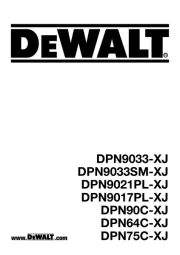
16 April 2025
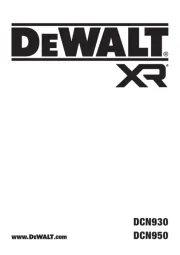
23 September 2024
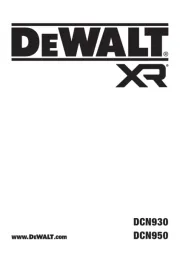
23 September 2024
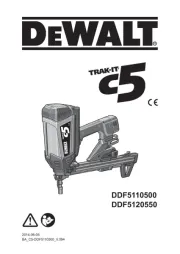
15 Juli 2024
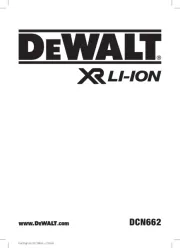
25 Juni 2024
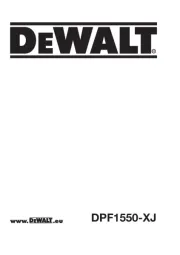
25 Juni 2024

25 Juni 2024
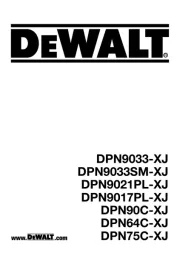
25 Juni 2024
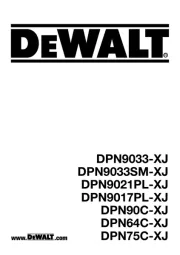
25 Juni 2024

24 Juni 2024
Handleiding Nietmachine
- Meister Craft
- Neo
- Syscom
- CTA Digital
- Workzone
- Surebonder
- Novus
- Kensington
- Aqua Joe
- Silverline
- President
- Craftsman
- Porter-Cable
- Bosch
- MSW
Nieuwste handleidingen voor Nietmachine
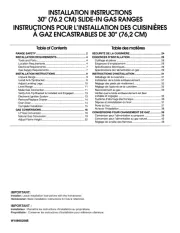
10 September 2025
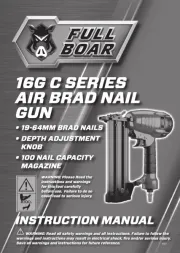
2 September 2025
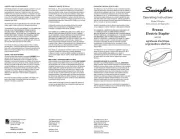
2 September 2025
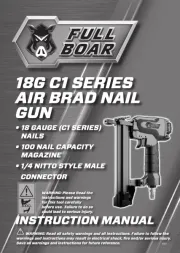
1 September 2025
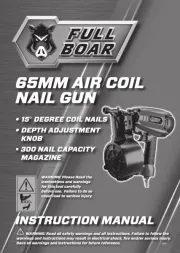
1 September 2025
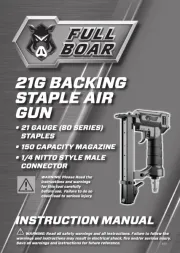
1 September 2025
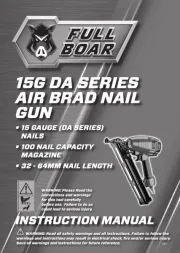
1 September 2025
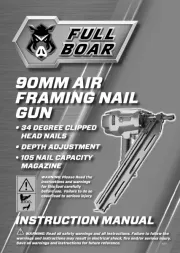
1 September 2025
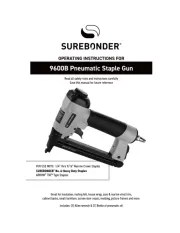
26 Augustus 2025

19 Augustus 2025